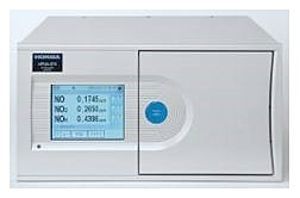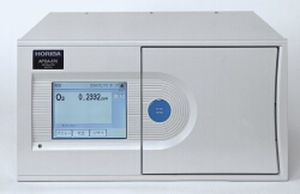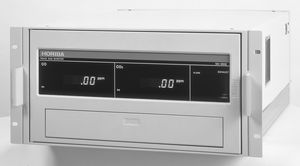
- Metrology - Laboratory
- Analytical Instrumentation
- Sulfur dioxide analyzer
- HORIBA Process & Environmental
Gas analyzer APSA-370sulfur dioxidefor ambient airmoisture

Add to favorites
Compare this product
Characteristics
- Measured entity
- gas, sulfur dioxide
- Application domain
- for ambient air
- Measured value
- moisture
- Configuration
- benchtop
- Technology
- UV fluorescence
- Other characteristics
- continuous, sampling
Description
Overview
The APSA-370 is a device for the continuous monitoring of atmospheric SO2 using UV fluorescence. The APSA-370 employs an proprietary, internal dry-method sampling device to achieve the highest levels of sensitivity and accuracy. The dry-method, due to its minimal maintenance requirements capability of continuous monitoring and instantaneous analysis of gas in its unaltered state, has been a preferred method for monitoring the atmospheric pollution.
AP-370 Series product literature
Features
The APSA-370 uses an innovative detector and a new optical system for low background, high sensitivity (0.05 ppm F.S.), and greatly improved stability.
The fluorescent chamber design gives measurements with minimum influence from moisture.
The unit has built-in aromatic hydrocarbon cutter with a selective transmission membrane. This reduces the influence of interference components. Coupled with HORIBA's unique flow-path, it also makes it possible to extend the working life of the cutter and to take measurements effects of sample flow variations.
In comparison with the FPD method, the APSA-370 design is (1) highly selective for SO2, (2) requires no supplemental gas, and (3) gives linear output.
Compensation for the lamp's luminous energy decline guarantees prolonged calibration stability.
The sample inlet has a built-in Teflon filter.
Catalogs
AP-370 Series
12 Pages
Exhibitions
Meet this supplier at the following exhibition(s):

Related Searches
- Gas analyser
- Concentration analyser
- Monitoring analyser
- Liquids analyser
- Desktop analyzer
- Automated analyzer
- Dust analyzer
- Spectrometer
- Portable analyser
- Continuous analyser
- Process analyser
- Integration analyser
- Water analyser
- Compact analyser
- Oxygen analyser
- Digital analyser
- NDIR analyzer
- In-line analyser
- Calibration analyser
- Laboratory spectrometer
*Prices are pre-tax. They exclude delivery charges and customs duties and do not include additional charges for installation or activation options. Prices are indicative only and may vary by country, with changes to the cost of raw materials and exchange rates.










